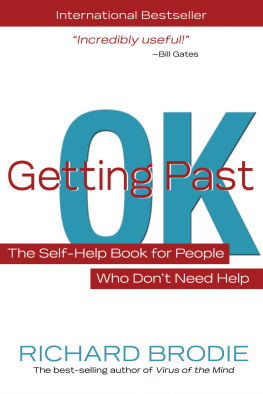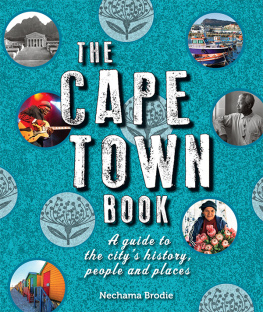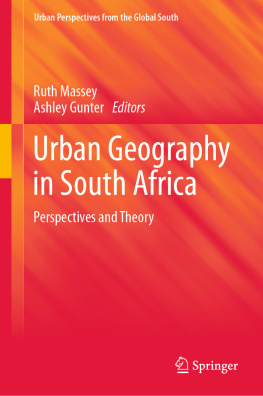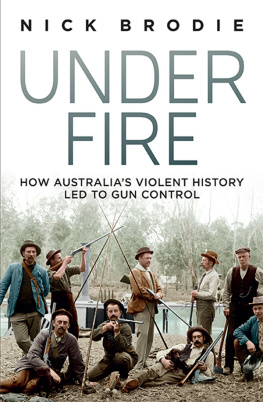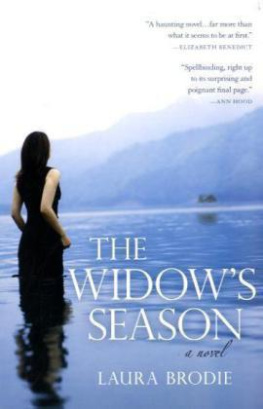Nechama Brodie - Femicide in South Africa
Here you can read online Nechama Brodie - Femicide in South Africa full text of the book (entire story) in english for free. Download pdf and epub, get meaning, cover and reviews about this ebook. year: 2020, publisher: Kwela Books, genre: Politics. Description of the work, (preface) as well as reviews are available. Best literature library LitArk.com created for fans of good reading and offers a wide selection of genres:
Romance novel
Science fiction
Adventure
Detective
Science
History
Home and family
Prose
Art
Politics
Computer
Non-fiction
Religion
Business
Children
Humor
Choose a favorite category and find really read worthwhile books. Enjoy immersion in the world of imagination, feel the emotions of the characters or learn something new for yourself, make an fascinating discovery.

- Book:Femicide in South Africa
- Author:
- Publisher:Kwela Books
- Genre:
- Year:2020
- Rating:4 / 5
- Favourites:Add to favourites
- Your mark:
- 80
- 1
- 2
- 3
- 4
- 5
Femicide in South Africa: summary, description and annotation
We offer to read an annotation, description, summary or preface (depends on what the author of the book "Femicide in South Africa" wrote himself). If you haven't found the necessary information about the book — write in the comments, we will try to find it.
Femicide in South Africa — read online for free the complete book (whole text) full work
Below is the text of the book, divided by pages. System saving the place of the last page read, allows you to conveniently read the book "Femicide in South Africa" online for free, without having to search again every time where you left off. Put a bookmark, and you can go to the page where you finished reading at any time.
Font size:
Interval:
Bookmark:

FEMICIDE
IN SOUTH AFRICA
Nechama Brodie
KWELA BOOKS
When we say South Africa has a femicide problem a crisis, to use the words of the government what do we mean?
Do we mean we have a problem with fatal violence against women relative to other countries, or relative to ourselves? Do we mean that fatal violence against women in South Africa, now, is different from or worse than at any other time in our countrys past?
Some people argue that South Africa doesnt have a femicide problem, it has a homicide problem. That the real issue is our extremely high levels of inter-personal violence, the majority of victims of which are men, not women at all. This is a silly argument about a serious topic, which overlooks the unpleasant fact that both statements are true.
South Africa has one of the highest murder rates in the world (the fifth highest according to the United Nations Office on Drugs and Crime, using 2015 data). Within that, we also have a femicide rate that is five to six times the world average, depending on the year. We have a specific problem of violence against women, particularly sexual violence and fatal violence against women. Yes, these acts take place within a broader culture of brutality which becomes only sharper, harder, more vicious the closer you look at it but these acts are also distinct within the hostels of interpersonal violence that effectively define our countrys history over the past four centuries. Femicide like the murders of children, and perhaps the elderly carries such distinct features that, if we were to try and understand or profile these killings only in the context of male homicides, we would miss the point entirely. The violence meted out against women has long been distinct from the violence meted out between men.
This book is based in a large part on my doctoral thesis, which looked at how South African media covered the murders of women who were killed between April 2012 and March 2013. In my research, I tried to document and analyse exactly what kind of narratives and how many stories the media crafted and published about the murders of women, in order to compare reporting on femicide with the reality of femicide, and ultimately discuss how this media coverage might have influenced public understanding of this type of violence.
Over the course of five years I built a database of more than 408 femicides, linked to over 5 700 news articles. My research showed that less than 20 per cent of femicides made it into the press at all and that, as a body of work, those that did showed little correlation with the reality of femicide across the country.
This book builds on these findings, integrated with information and data from a series of mortality and femicide studies conducted in South Africa over the last two decades, and tries to look at the phenomenon of femicide in South Africa through a much longer lens going back 40 years and more to see if we are better able to understand not only femicide as it is now, but also if (and how) fatal violence against women has changed over the course of the last few decades, particularly before and after 1994.
What emerges, from both the short-term and from longitudinal data, is a much broader picture of a continuum of violence against women, which, with a few exceptions, I dont believe has changed so much as we have developed new words to describe it and new ways of conceptualising it.
What this also shows is that on one level we understand femicide very well particularly in the last 25 or so years, there has been a significant amount of good quality, peer-reviewed regional and national research into the epidemiology of fatal violence against women in South Africa. But at the same time, this has been accompanied by a mass of misinformation about crime and violence. Part of this is the legacy of an incredibly violent past and present, which makes information sometimes overwhelming, and also incomprehensible in the face of anecdote and personal experiences with crime and violence. It is also because of the states continued reluctance to take responsibility, even going so far as to obscure crime data on more than one occasion. And, in no small part, it is due to more recent malicious players like the white right wing who have propagated myths and false claims around race and crime, including claims of a white genocide. These myths and misinformation work so well because they creep into the crevasses of our prejudices and suspicion, and then we give them guns.
This book attempts to acknowledge these narratives the ones we have used to tell ourselves particular versions of how we think the world works and tries to explore and explain them, using data and anecdote but distinguishing between the two, and providing essential context so we can understand how both anecdote and data can be a product of their time.
What is important to take away from this is that individual stories matter, a lot, because when women die they are not and should never be considered as just statistics. But, also, that these deaths dont happen in isolation. If we are ever really to make a meaningful difference to combating gender-based violence, we need to see and understand it for what it truly is.
One Friday night, about a year before I finished my thesis, a man tried to break into the room where I was sleeping.
This happened in Franschhoek, a small town in the Cape winelands where I was a panellist at the annual literary festival. I was staying in a little guest cottage in the garden of a larger house. My room was pretty much one big bed and a generous bathroom, which had a shower and a bath. This detail is important because when I woke up to an unfamiliar noise at three in the morning, the first thing I thought was that a bird or maybe a rat had somehow gotten into the room and was eating the special Harry and Meghan cupcakes that were currently lying in the (empty) bathtub in anticipation of the royal wedding which was taking place that weekend. The cupcakes, together with a few royal petit fours and cookies, had been hand-delivered from Cape Town by my friend, former state prosecutor and member of parliament, Glynnis Breytenbach, who was also speaking at the festival, about the book we had written together.
The noise sounded almost like someone was walking and breathing in the bathtub. It was so nonsensical that I dismissed it at first. But the sound persisted. And eventually I got up to look in the bath, as much as I was able to see at three in the morning without my glasses, and saw that there was nothing there, except the cupcakes in their stripy cardboard box, which had not somehow magically developed feet.
The noises came again. And the second time I went to look, I noticed the bathroom blind was moving as if there was a very strong wind outside. Except there was no wind. And then I saw that, behind the blind, was a man. A man who was already more than halfway into my room, his arms and his body worked through a tiny window that, thank God, was just a little too small and a little too high to make it easy for him.
He was panting with exertion. That was what I had heard. That, and the sound of the blind tapping against the windowsill and the vase on the stand beneath it.
In that first moment of terrifying awareness and denial, there was a split second where this man breaking in through the window in my room was both impossible and inescapable. Impossible because this couldnt happen to me . Because I was strong. Important. Powerful. And, at the same time, it was very definitely happening to me. And part of that felt inevitable almost. The part of my brain that was going, Ah, yes. Of course this is going to happe n to you. You want to be the expert in femicide, how else did you think it was going to go?
Font size:
Interval:
Bookmark:
Similar books «Femicide in South Africa»
Look at similar books to Femicide in South Africa. We have selected literature similar in name and meaning in the hope of providing readers with more options to find new, interesting, not yet read works.
Discussion, reviews of the book Femicide in South Africa and just readers' own opinions. Leave your comments, write what you think about the work, its meaning or the main characters. Specify what exactly you liked and what you didn't like, and why you think so.


